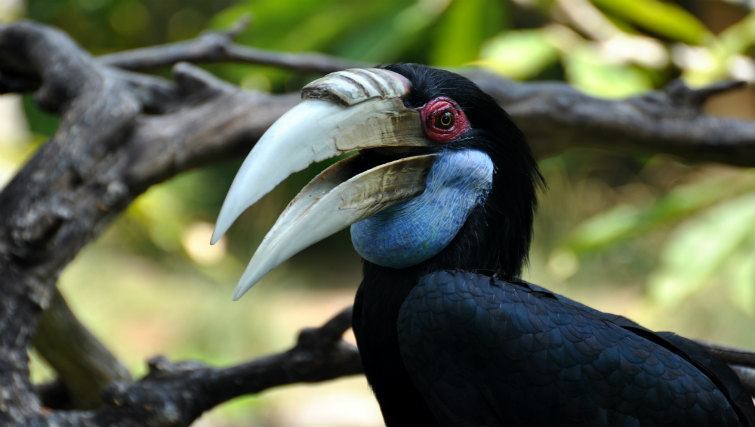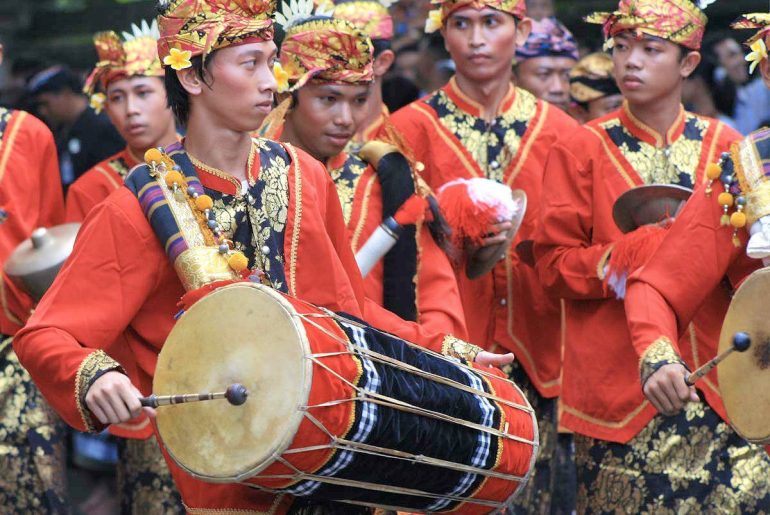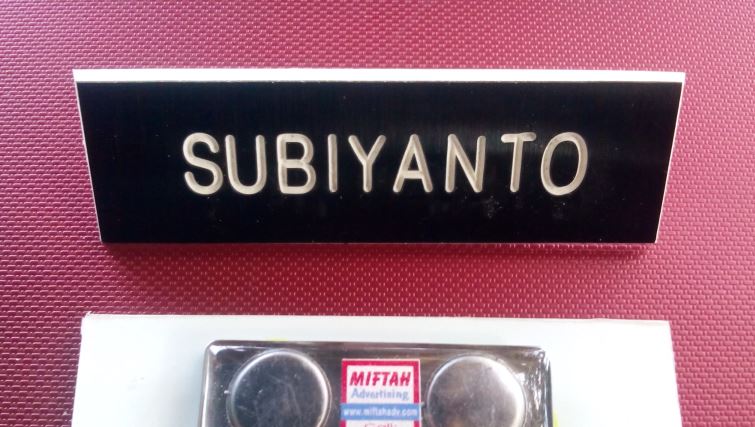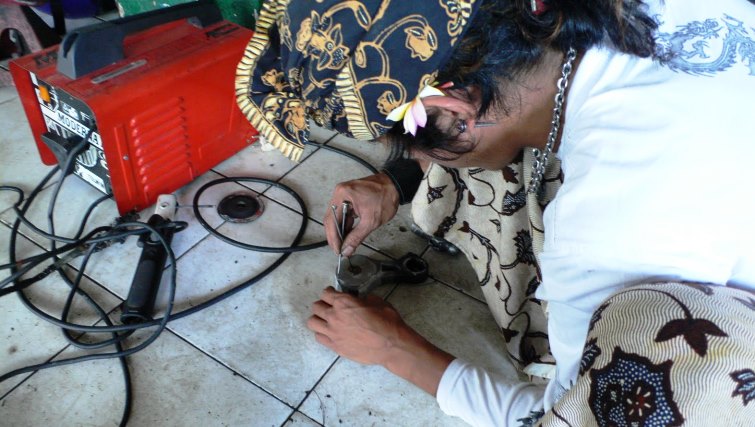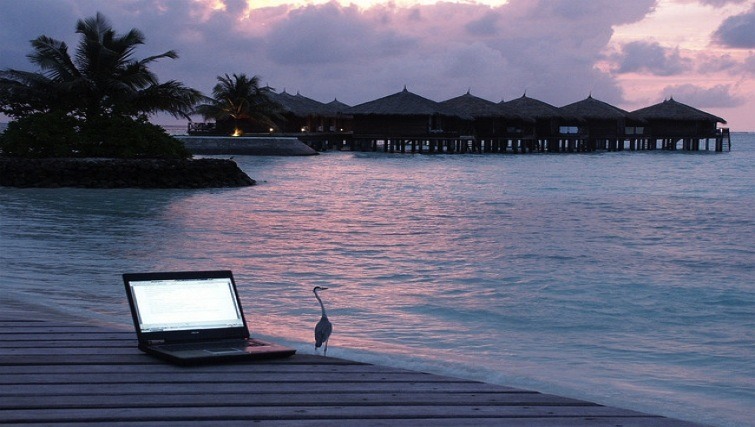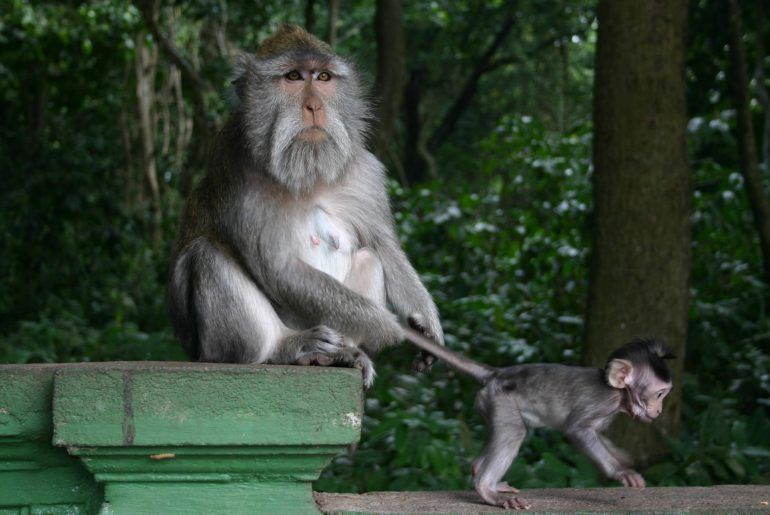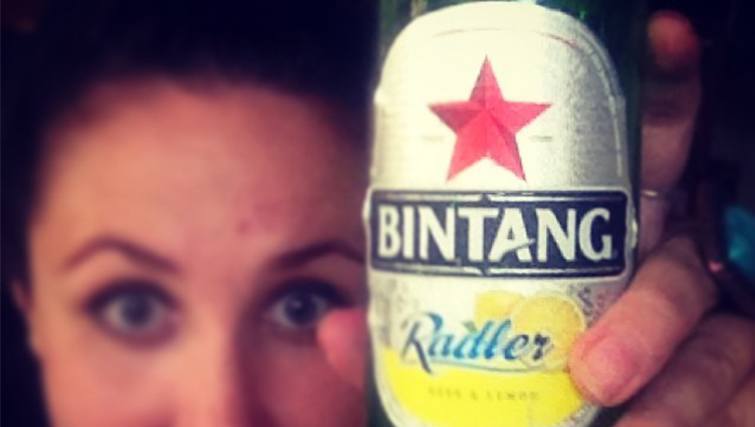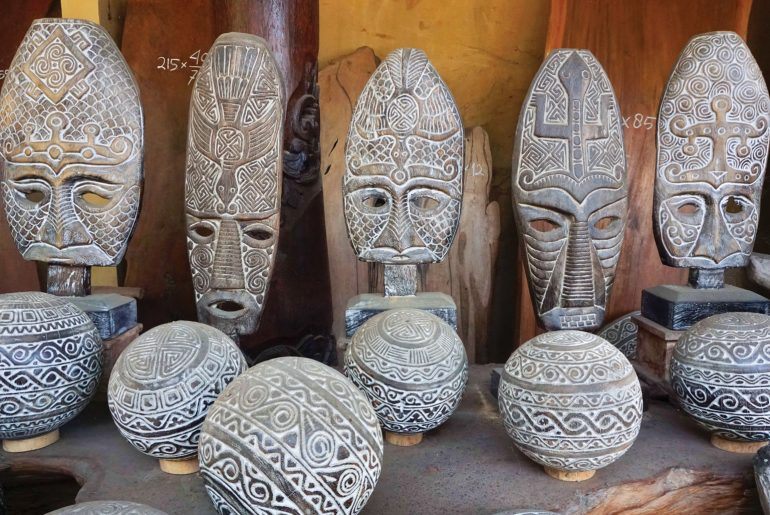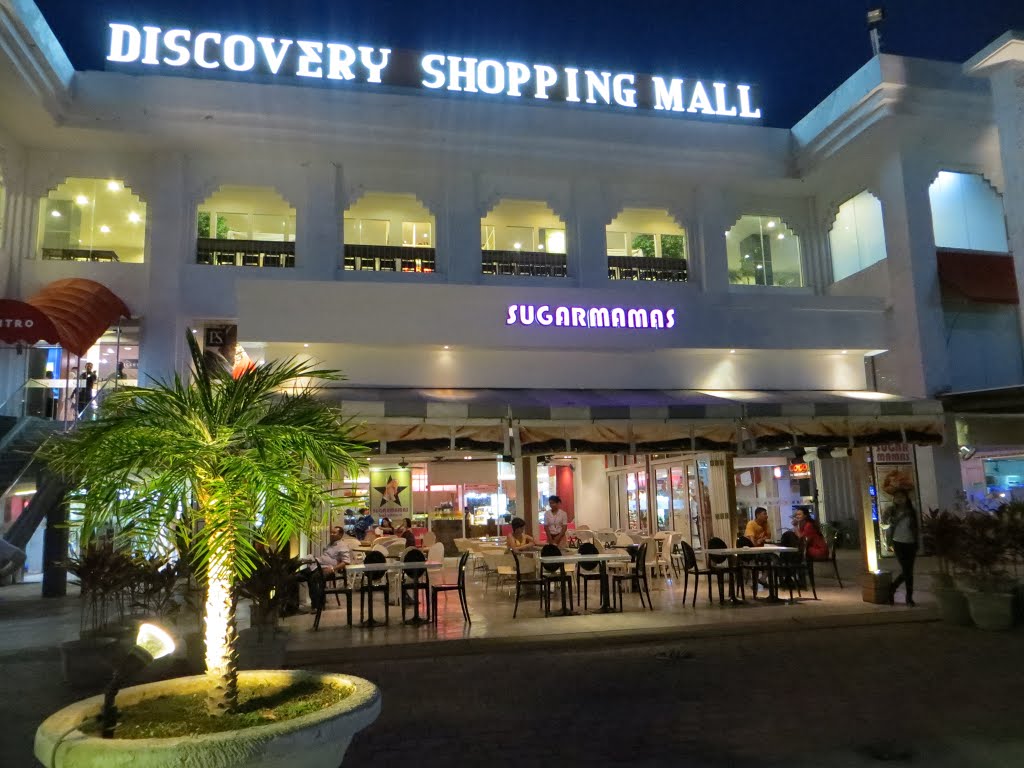So you’re not a big fan of the zoo, or seeing animals in cages, or hideous live animal shows, but you love to get up close and personal with creatures great and small? Well, you’re in luck; one thing Bali is not short of is an abundance of interesting wildlife.
Get your cute fix and experience Bali’s animal kingdom in a selection of open-air sanctuaries and wildlife parks.
Ubud Monkey Forest, Padangtegal, Ubud
Ubud Monkey Forest is perhaps the best-known monkey hang out due to its location on the fringe of Ubud’s main centre. Also known as the Sacred Monkey Forest of Padangtegal, and by its official name, Mandala Wisata Wenara Wana, Ubud Monkey Forest is not only home to over 300 grey-haired macaques, but also three holy temples that are sanctified by the local villagers.
Ubud Monkey Forest boasts over 115 different species of trees, unraveling stone pathways, a bevy of beautiful statues covered in moss and tangles upon tangles of dense green jungle.
In addition to being a natural tourist attraction, The Ubud Monkey Forest is also a place of scientific research and conservation and is overseen by Padangtegal village.
Other monkey inhabited spaces include the Alas Kedaton Monkey Forest in Tabanan and the Uluwatu Monkey Forest. The Alas Kedaton Monkey Forest is located in the village of Kutuh, about 25km northeast of Denpasar. This small 12-hectare forest is home to hundreds of grey long-tailed macaques (Macaca fascicularis) and is regarded as the island’s ‘other monkey forest’ after the most prominent and often visited Ubud Monkey Forest.
This is probably due to the fact that Kedaton is located further off the beaten track than the assessable Ubud Monkey Forest. Then there is the Uluwatu Monkey Forest that is perched on stunning white cliffs, has a backdrop of blue sea and features the Uluwatu Temple.
TRAVEL TIP
Remember that although wild monkeys are fascinating and cute beyond words, they are still, in fact, wild animals. It’s best to enjoy these long-tailed creatures at a comfortable distance in their natural habitat, as actively seeking out their attention can have interesting and often unexpected results i.e. they are lightening quick, have sharp claws and know that most humans carry a few treats on them in the park.
As tempting as the thrill of feeding the monkeys may be, try not to purchase the peanuts and bananas sold at vendor stands; dependence on tourist hand-outs disrupts their natural feeding cycle and tends to impact their health. Yep, living on a diet of peanuts and bananas is just as bad for monkeys as it would be for humans.
Even if it was good for their health, feeding the monkeys doesn’t always turn out as planned. You may be eyeing off that cute baby monkey to offer some peanuts to, but chances are the little one isn’t going to get anything, and the more rotund and angry monkey will step in for first dibs. You seriously don’t want to get in the way of the older generation either.
The macaques are also not shy about grabbing food from your hand, or grabbing your bag to take a peak at what’s inside. The saying ‘cheeky monkey’ didn’t come from nowhere. They are the animal kingdom’s answer to pick-pockets and are as cunning as they are cute.
Ubud Monkey Forest (Sacred Monkey Forest)
Address: Jalan Wenara Wana, Ubud, Bali
Phone: +62 361 971304
Uluwatu Monkey Forest
Address: Jalan Uluwatu, Bukit Peninsula, Bali
Alas Kedaton Monkey Forest
Address: Jalan Kapten Tendean, Tabanan, Bali
Bird Village of Petulu
At around 5:30 every evening, flocks upon flocks of Kokokan birds (herons) fly from all over the Bali island to congregate in the small town of Petulu.
What is fascinating about this occurrence is the sheer number of birds that bunk down for the night in Petulu. The village is relatively small, so there is usually over 100 birds camped out in each tree, testing the strength of their often fragile branches. Talk about high-density, high-rise living. Space here is definitely at a premium.
The villagers believe that the birds are their supernatural guardians, and hold a special ritual once every six months to honour them, expressing their gratitude in having Petula as the place the birds lay eggs and raise their young before the birds migrate in July and August. There is a bit of mystery surrounding why the herons turned up in 1965 and have come back every evening since. It is said that the herons are the reincarnation of thousands of Balinese who were killed during the anticommunist massacre in Indonesia in 1965 and 1966.
After the riots in the village, people held a ceremony in Petulu to remember the slain and to protect the survivors. Shortly after the ceremony the birds arrived in the village, and have made a daily ritual of flying in to spend the night in Petulu ever since. Naturally, the villagers believe these birds, the spirits of their ancestors, also bring them a bounty of good-luck.
Petulu is near the Ubud botanic gardens, Kutuh Kaja, so combining a day trip that includes both will provide you with an ample fix of Bali nature and wildlife.
Bali Bird Park
Welcome to Bali Bird Park, where 1000 birds from 250 species frolic around 2 hectares of landscaped tropical gardens.
Located in the Batubulan stone carving village, the Bali Bird Park is a popular day trip and is close to Kuta, Sanur and Ubud.
The park has a number of walk-through aviaries and is a safe haven for numerous rare or endangered species such as the cendrawasih (birds of paradise) from West Papua and the Leucopsar rothschildi (Bali starling).
The park is divided into different areas that aim to recreate the natural habitats of foreign birds, such as those from Latin America, South Africa and Australia.
There is a nocturnal owl house in a specially-adapted traditional Toraja house, as well as informative shows and scheduled feeding times where you can get up close and personal such as by feeding a pelican or holding a macaw. Some birds are in cages, where as others roam about the grounds or sit high in the trees.
A perfect day trip for bird lovers.
Address: Jl. Serma Cok Ngurah Gambir, Singapadu, Batubulan, Bali, Indonesia
Rimba Reptile Park
Located adjacent to the Bali Bird Park, Rimba Reptile Park is for those who prefer their animals footloose and feather free. The park houses around 20 different species of reptiles and over 181 specimens of reptiles and amphibians.
There’s a 1.5 metre Komodo dragon as well as crocodiles, flying lizards, iguanas, frogs and geckos.
The park has an impressively scary collection of venomous snakes including the cobra, tapian and mamba as well as an 8-metre reticulated python and an albino Burmese python. There’s a 1.5 metre Komodo dragon as well as crocodiles, flying lizards, iguanas, frogs and geckos. An assortment of cold-blooded creatures sun themselves on the rocks of different enclosures that are filled with lily ponds, waterfalls and Balinese plant life.
There is also a large canopied courtyard to sit back in and spot critters in the overhanging trees above. This park won’t be for everyone, particularily if your not a fan of snakes and things that bite.
Address: Jalan Cok Ngurah Gambir, Singapadu, Batubulan, Bali
Bali Safari and Marine Park, East Bali
The Bali Safari and Marine Park is the kind of place you would pester your parents to take you to when you were a kid. Although it’s located in Bali, don’t expect to find a whole lot of native Balinese inhabitants as it is filled mostly with tourist attracting animals from around the world. Here, you will find over 60 species of animals such as lions, tigers, meerkats, porcupines and the Bali Mynah, a bird that is native to Bali.
There are camel rides as well as a large open air exhibit, restaurants, live shows at the theatre and even a night safari. Basically, this is a great place to take the kids but may not be what you are after if you are looking for a more authentic Bali experience. In saying that, the park provides both education for visitors and conservation efforts, so for that we give it the official thumbs up. It is a member of the CBSG (Conservations Breeding Specialist Group) and is involved in the conservation and release of the Bali Mynah, the Sumatran Elephant and the Sumatran Tiger.
Address: Jl Prof Ida Bagus Mantra Km, 19.8, Bali 80551, Indonesia
Phone: +62 361 751 300
Turtle Conservation and Education Centre, Pulau Serangan
Turtles are a bit of a contentious issue in Bali. Traditionally eaten as a delicacy, green turtles have long been captured and killed in Bali. Now, however, with the turtle population rapidly dwindling due to hunting and over development, there is a conservation effort taking place in Bali. It aims to educate locals about how turtles are better off in the sea than on their dinner plate, part of a religious ceremony or sold as a tourist trinket.
The Turtle Conservation and Education Centre (TCEC) is a small compound that provides a protected space for turtle eggs to hatch and for baby turtles to return to the sea. It also houses a number of specialised tiled tanks for larger injured turtles to recover from abuse or illness. It was opened in 2006 by the governor of Bali, Mr Dewa Barata, as part of a strategy to eradicate illegal turtle trading and to empower locals to help through garnering awareness and providing education.
The TCEC is free to visit, but donations are encouraged and should be given based on the importance and dedication of the project and its staff. The centre is run by friendly locals who are only too happy to share some information with you about the turtles in their care.
TRAVEL TIP
Beware of fake ‘Turtle Parks’ that are not part of the TCEC. Check with your hotel to make sure you are visiting the real one if you are not sure, as some of the imitations can be a heart breaking experience as they are more about getting money from tourists than giving a hoot about turtles.
Learn more about the TCEC through WWF Indonesia
Address: Jalan Tukad Wisata No 4 Serangan
Phone: +62 361 857 7881
Bali Butterfly Park (Taman Kupu Kupu), Tabanan
Billed as being ‘the largest butterfly park in Asia’, the Bali Butterfly park, or Taman Kupa Kupa, is your chance to see hundreds of butterflies from the 15 known species that thrive in Indonesia, as well as various other insects and arachnids such as beetles, stick and leaf insects, and the less-friendly varieties such as scorpions and spiders.
The park preserves several endangered species in its collection such as the Bali peacock (Papilio peranthus) and the paradise birdwing (Ornithoptera paradisea) and it also functions as a research centre. It’s best to visit in the early and mid-morning when the butterflies are at their most active. You don’t have to be an entomologist to enjoy this park, it’s a magical place for both big kids and small kids alike. There is a massive sign outside the park, so it’s not hard to miss.
Address: Jl. Batukaru, Banjar Sandan Lebah, Wanasari Village, Tabanan
Phone: +62 361 814 282
Gili Meno bird park and turtle sanctuary
After you have exhausted the animal lover’s circuit on the main land, it is well worth taking a boat ride to Gili Meno. One of the three Gili islands, Gili Meno is renowned for its chilled out vibe and breathtaking natural surrounds. The beach literally looks like the kind of remote island paradise you would see in movies about shipwrecks, which is probably why it is often described as offering a ‘Robinson Crusoe’ experience. In the centre of the island you will find the the Gili Meno bird park. The park is home to over 300 birds such as hornbills, eagles, pelicans, parrots, peafowls, macaws and more. There has been a bit of negativity in the past about the park’s conditions, but management seems to be taking heed and the aviaries are being rapidly upgraded. As with all upgrades – particularly on Indonesia’s smaller islands where everything is transported by boat – things understandably take time.
If birds aren’t your jam, then there’s a turtle sanctuary on Gili Meno as well. Bolong Turtle Sanctuary is a community run safe haven founded by its namesake (local innovator Bolong) for green sea turtles and Loggerhead Turtles to lay their eggs away from the threat of predators (both human and from the animal kingdom).
As with the TCEC, the sanctuary also nurtures sick and injured turtles and gives baby turtles the chance to thrive. The hatchery relies on donations and has made a noticeable difference to the local turtle population. You can see for yourself by having a snorkel or dive nearby! Gili Meno a popular destination for diving enthusiasts due to its crystal clear waters and abundant marine life.
Address: Jl.Pelabuhan Gili Meno – Lombok barat, Gili Meno
Phone: +62 81 339 599644
Places an animal lover should not visit however:
Elephant Safari Park
Elephant ride is cruel.
This kind of animal should never be promoted as people who don’t know anything about this topic could think that this is a nice thing to do with elephants. However these elephants have been terribly abused in order to ‘tame’ them (they will always be wild elephants and therefore always dangerous).
If you’re not convinced that elephant rides are cruel you can check out this site:
http://bawabali.com/our-




